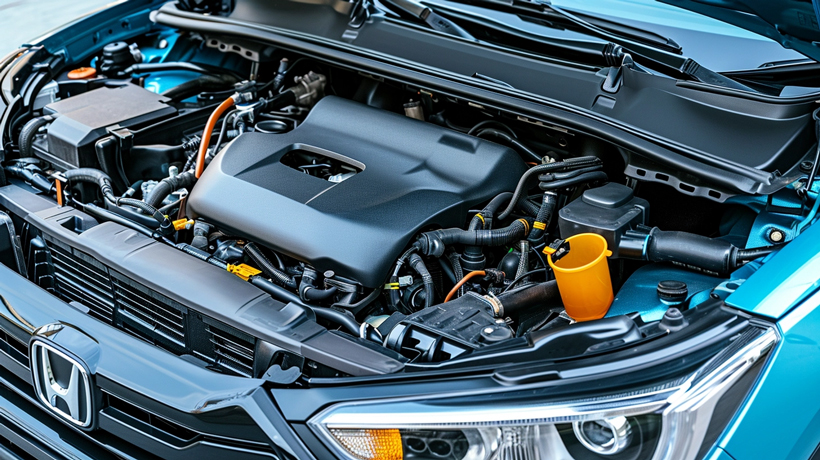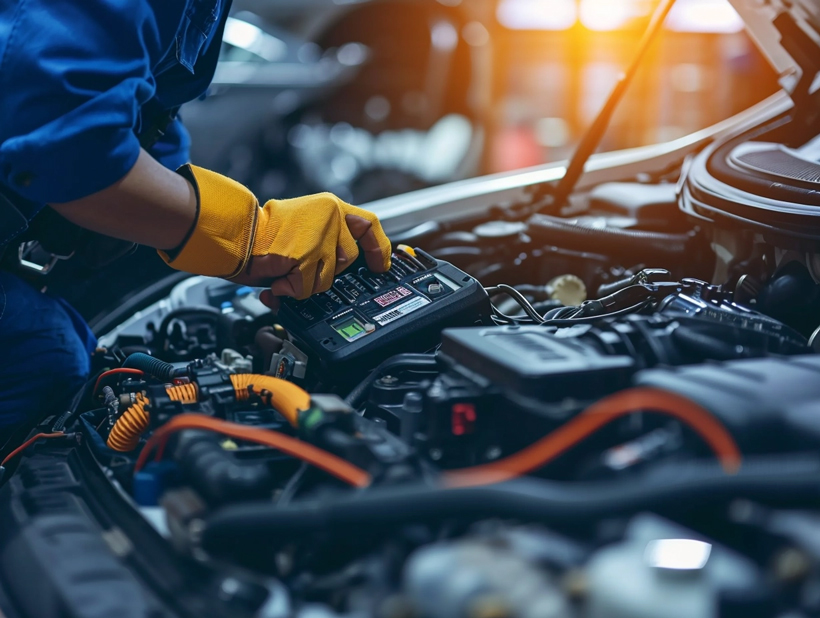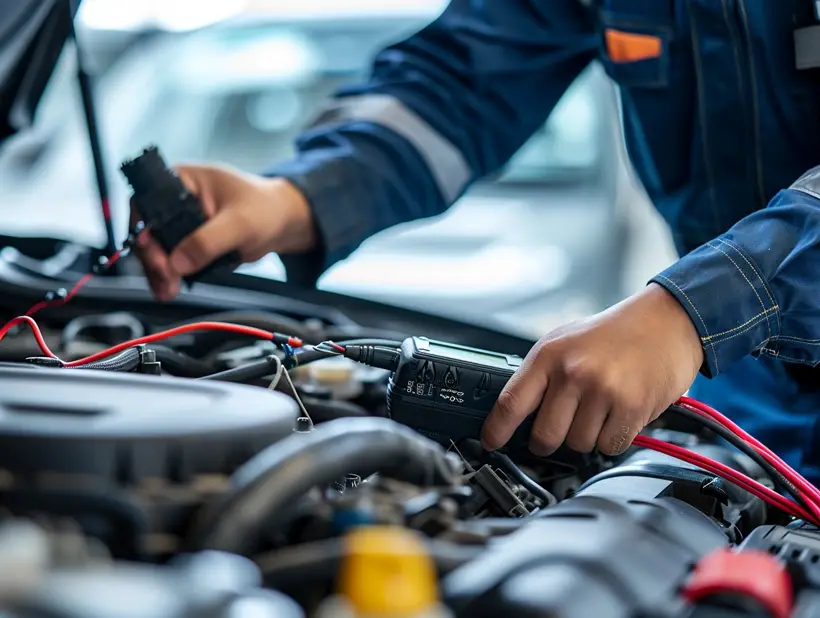Experiencing engine sputters can be both annoying and worrisome. It’s a clear sign that our car isn’t performing as it should, and we know it’s time to take a closer look. Misfires and ignition problems are often the culprits behind these erratic symphonies under the hood.
We’ve all been there‚Äîenjoying a smooth drive when suddenly our car stutters, leaving us puzzled. Diagnosing these issues promptly can save us from a world of hassle down the road. Let’s dive into what causes these hiccups and how we can fix them before they turn into major headaches.
Understanding the root of engine misfires is crucial for maintaining our car’s health and performance. We’re here to guide you through the common causes and the steps to diagnose them. With our expertise, we’ll have your car running smoothly in no time.
Common Causes of Engine Misfires
When the engine in your car isn’t performing as it should, and you’re experiencing sputtering or stalling, it’s often due to a misfire. Understanding what causes these misfires can help us pinpoint the issue and take corrective action. Here are the most frequent culprits:
- Spark Plugs and Wires: These components are vital for igniting the fuel in your engine. Over time, they can wear out or malfunction, causing misfires. If a spark plug or its wire is faulty, the engine won’t fire correctly.
- Fuel System Issues: The fuel system supplies your engine with the petrol or diesel it needs to run. Any hiccups here, such as a clogged fuel injector or a failing fuel pump, can lead to uneven engine performance and misfires.
- Air Intake System: Just as your engine needs fuel, it requires air. A blocked air filter or air intake manifold can choke the engine of oxygen, leading to poor combustion and misfires.
- Distributor Cap and Rotor: These parts are usually found in older cars with distributor-based ignition systems. Corrosion or damage to the distributor cap or rotor can cause misfires.
- Engine Control Unit (ECU) Problems: The ECU is the brain of your car, controlling the engine’s timing and overall function. If the ECU has issues, it can send incorrect commands resulting in misfires.

Problems with any one of these components can disrupt the delicate balance required for smooth engine operation. Let’s delve a bit deeper and look at some indicative symptoms that point to each potential cause.
| Component | Likely Symptoms |
|---|---|
| Spark Plugs and Wires | Erratic idling, lack of power, increased fuel consumption |
| Fuel System Issues | Hesitation during acceleration, starting difficulties |
| Air Intake System | High fuel consumption, reduced horsepower |
| Distributor Cap and Rotor | Trouble starting, shaking, rattling |
| Engine Control Unit (ECU) | Dashboard warning lights, erratic engine behavior |
Symptoms of Engine Misfires
When we’re facing engine misfire issues, it’s essential to recognize the symptoms to address the problem promptly. Misfires can manifest in several ways, with each sign pointing towards a potential culprit in our vehicle’s complex system. Here’s what we should be on the lookout for:
- Uneven or rough idling that leads to vibrations: When our car is stationary, and it shakes or tremors more than usual, it’s often a sign of misfiring cylinders.
- Decreased acceleration: If we notice that our car isn’t picking up speed as swiftly or smoothly as it should, it could be suffering from a misfire.
- Engine sounds: Listen for unexpected sounds such as popping, spitting, or backfiring from the engine bay. These are classic audible indications of misfires.
- Check engine light: One of our car’s most decisive signs, the check engine light, can illuminate on the dashboard due to misfire, directing us to run a diagnostic test.

Fuel Economy Changes:
Misfires can also significantly affect fuel efficiency. Here’s what we might see:
| Symptom | Potential Impact on Fuel Economy |
|---|---|
| Increased fuel consumption | A clear indicator, as misfires make the engine work harder, burning more fuel. |
| Unburned fuel smell | If we detect this odor, it’s often because not all fuel is combusting as it should. |
Furthermore, to differentiate from other engine troubles, we should consider:
- Start-up troubles: If our car struggles to start or fails to start on the first try, this may be linked to an engine misfire situation.
- Power loss: When our vehicle suddenly loses power during acceleration, this can indicate a misfiring cylinder.
By staying attentive to these symptoms, we can address engine misfires effectively, ensuring smoother performance and longevity for our vehicles. Remember, it’s not only about fixing the immediate issue but also about understanding the health of our car to prevent future occurrences.
Diagnosing Engine Misfires
When we encounter engine misfires, pinpointing the exact cause requires a systematic approach. Let’s walk through the steps necessary to diagnose these pesky problems.
To start, visual inspection can reveal obvious issues. Look for damaged or worn out components. These include:
- Spark plugs and wires
- Distributor cap and rotor
- Air filters and intake manifold
- Fuel injectors and fuel lines
Next, we’ll need to check the On-Board Diagnostics (OBD) System. This tool connects to the vehicle’s computer to retrieve diagnostic trouble codes (DTCs). These codes often indicate where the malfunction may be occurring. Modern cars typically have an OBD-II port, making it easy to access these codes with a standard scanner.

The following table outlines common diagnostic trouble codes related to engine misfires:
| Code | Description |
|---|---|
| P0300 | Random/Multiple Misfires |
| P0301 | Misfire in Cylinder 1 |
| P0302 | Misfire in Cylinder 2 |
| P0312 | Misfire in Cylinder 12 |
After gathering the codes, it’s essential to check the Fuel System. A problem here can affect the air-fuel mixture, leading to misfires. Inspect for:
- Clogged fuel injectors
- Faulty fuel pumps
- Dirty fuel filters
Don’t forget about the Ignition System. Issues with ignition can be a dominant trigger for engine sputters. Inspect the ignition coils, spark plugs, and distributor for signs of failure.
Lastly, consider the Engine Control Unit (ECU). If all else seems fine, the ECU could be the culprit, especially if it’s producing incorrect timing adjustments or fuel mixtures.
By methodically examining these areas, we’re taking critical steps to isolate and ultimately resolve engine misfires. Regular maintenance still stands as the best defense against these issues, ensuring smoother operations and minimizing unexpected breakdowns. With each potential cause addressed, we move closer to restoring our car’s performance and reliability.
Step 1: Check for Ignition Problems
When we start diagnosing car engine sputters, one of the crucial steps we take is to check for ignition problems. This typically involves several key components that must all be functioning properly to ensure a smooth drive.
Spark Plugs and Wires: At the heart of the ignition system are the spark plugs and wires. They can wear out over time or become fouled, which can lead to misfires. We always look for signs of damage or wear, examining the plug electrodes for deposits or gaps that are not to manufacturer specifications.
- Clean or replace spark plugs as needed
- Inspect wires for cracks or breaks
- Check for correct gap on spark plugs
Coil Packs and Ignition Coil: Modern vehicles may use coil packs or an ignition coil instead of the traditional distributor. A failing coil pack can produce a weak spark or no spark at all, leading to engine sputtering or a complete misfire. Using an OBD tool to read the error codes can assist in pinpointing if the coils are the issue.
- Test coil resistance with a multimeter
- Check for voltage presence
Distributor Cap and Rotor: For cars that have them, we check the distributor cap and rotor for corrosion or carbon build-up, which can interrupt the electrical flow to the spark plugs. It’s important to replace these parts if they show significant wear.
- Inspect distributor cap for cracks
- Observe rotor for proper contact and condition
By systematically checking each of these ignition components, we can identify and rectify most ignition-related problems that could be causing the engine to sputter. Regular maintenance and replacing parts according to the service intervals can help prevent these issues before they escalate. It’s also wise to ensure that all replacement parts meet the vehicle manufacturer’s specifications for the best performance.
Step 2: Inspect Spark Plugs and Wires
After addressing the initial diagnostic stages, our focus shifts to the spark plugs and wires – key players in your ignition system. These components are responsible for delivering the electric spark that ignites the fuel and air mixture within the cylinders. When they’re not functioning correctly, engine sputtering is a common symptom, and it’s our job to examine them for any signs of trouble.
Spark plugs have a tough job and can wear out or become fouled after miles of service:
- Check for physical damage like cracks or chips
- Look for carbon deposits or oil residue which indicates combustion issues
- Gauge the electrode gap ‚ incorrect spacing can lead to misfires
For the spark plug wires:
- Inspect for cracks, cuts, or brittleness
- Test for proper resistance with a multimeter
- Ensure each wire is securely connected at both ends
If you’re unsure about the condition of your spark plugs or wires, replacing them may be the most prudent step. It’s a cost-effective fix that can restore engine performance and prevent future misfires.
As we progress, keep in mind that spark plug issues are often the messengers, not the culprits – a symptom that can point us toward larger concerns in the ignition system. By keeping a detailed record of our findings, we build a comprehensive picture of our vehicle’s health, one step at a time.
As we delve deeper, we’ll next turn our attention to the fuel system, another critical area that can influence engine stability. It’s an interconnected network where even seemingly minor issues can escalate into more serious performance problems. Our goal remains clear: identify the root cause of engine sputtering to keep our ride smooth and reliable.
Step 3: Examine the Ignition Coil
After ensuring the spark plugs and wires are in good condition, it’s vital to inspect the ignition coil. The ignition coil transforms the battery’s low voltage to the thousands of volts needed to create an electric spark in the spark plugs to ignite the fuel. Faulty ignition coils can cause engine misfire, and here’s how we can test them.
First, it’s important to disconnect the battery before starting work on the ignition system to prevent any electrical shocks or shorts. With the power off, we’ll locate the ignition coil; it’s typically found on the engine or within the vehicle’s distributor system.
We’ll be looking for signs of damage such as:
- Cracks or corrosion on the ignition coil body
- Damage on the insulation of the wires leading to and from the coil
- Any burn marks which might indicate short-circuiting
If the visual inspection doesn’t reveal clear issues, we move on to use a multimeter to test the resistance of the coil. The coil has two terminals: the primary winding and the secondary winding. We‚Äôll consult the car‚Äôs manual for the correct resistance range and then compare our readings to these specifications:
| Coil Type | Expected Resistance |
|---|---|
| Primary | 0.4 – 2 ohms |
| Secondary | 6,000 ‚10,000 ohms |
Should the readings fall outside these ranges, it‚Äôs a strong indication that the ignition coil is not functioning correctly. In some instances, vehicles have more than one coil in a ‘coil on plug’ system, where each plug has its own coil. We’ll need to check each one to locate any that are malfunctioning or show inconsistent resistance readings.
Beyond this, modern cars have advanced diagnostics that can be ran through a scanner. These can detect error codes related to the ignition coil which greatly assist in pinpointing the issue. Remember, a failing ignition coil can sometimes produce intermittent signs before it fails entirely so it’s crucial to address any red flags immediately.
Let’s continue to maintain the integrity of the ignition system and guarantee that our cars perform reliably. Moving forward, we’ll take a closer look at the fuel system to ensure that it isn’t the culprit behind the engine’s sputtering.
Step 4: Test the Fuel Injectors
After ensuring the ignition coils are in peak condition, it’s crucial to move on to the fuel injectors. A crucial component for optimal engine performance, fuel injectors can often be the culprits behind engine sputtering. We’ll explore identifying and rectifying issues with your car’s fuel injectors.
Fuel injectors are responsible for delivering gasoline to the engine in a fine, high-pressure mist. Over time, they can become clogged or fail, leading to an imbalance in the fuel-air mix, contributing to engine misfire. To check them:
- Listen: Using a mechanic’s stethoscope, listen to each injector. A healthy injector should make a distinct clicking sound.
- Visual Inspection: Look for signs of fuel leakage or damage to the injector’s body.
- Electrical testing: With the engine off and cool, use a multimeter to test the resistance across the terminals of each injector. Resistance that’s outside the manufacturer’s specifications suggests a malfunction.
Should an injector be failing, it usually needs cleaning or, if necessary, replacement. This process might involve the use of a fuel injector cleaner added to the gas tank or in more severe cases, removal and direct cleaning or full-scale replacement.
Here’s a quick reference table for typical resistance values of fuel injectors:
| Injector Status | Resistance Range (Ohms) |
|---|---|
| Functional | 12 – 16 |
| Questionable Status | 10 – 11 or 17 – 18 |
| Potential Failure | Below 10 or above 18 |
While we continue to diagnose our engine’s misfires, it‚Äôs clear that regular maintenance of the fuel injectors is essential for ensuring a smooth driving experience. It’s important to address any inconsistencies immediately to prevent further complications with your vehicle’s performance. As we delve deeper into the intricacies of car maintenance, let’s remember that our journey requires patience and attention to detail. Next, we‚Äôll look at the other aspects of the fuel system that could be affecting engine performance.
Step 5: Evaluate the Engine Control Module (ECM)
Once we’ve examined the fuel injectors thoroughly, it’s time to turn our attention to the Engine Control Module (ECM). This crucial component acts as the brain of the vehicle, orchestrating the ignition, fuel delivery, and emission systems. It’s capable of adjusting the engine’s operations in real-time, ensuring optimal performance.

Understanding the ECM’s Role
The ECM receives data from various sensors throughout the car and uses this information to make split-second decisions for engine management. If the ECM isn’t functioning correctly, it can lead to a cascade of engine issues, including sputtering and misfires.
Symptoms of a Faulty ECM
- Engine performance issues such as misfires or stalling
- Poor fuel economy
- Irregular throttle behavior
- Unusual error codes on the onboard diagnostic system
Diagnostic Process
To assess the ECM:
- Use an OBD-II scanner to check for any stored error codes.
- Review the freeze frame data to understand the conditions when the fault occurred.
- Perform a visual inspection for signs of damage, such as corrosion or loose connections.
- Measure the voltage and grounding of the ECM with a multimeter to confirm it’s within specification.
Monitoring ECM Health
Maintaining the ECM requires regular diagnostics and software updates when necessary. It’s vital to address issues as soon as they’re detected‚Äîneglect can lead to more severe and costly damage. Regular check-ups can prevent ECM-related misfires and keep the engine running smoothly.
By meticulously evaluating the ECM, we ensure all components interact seamlessly. Achieving harmony within the engine’s ecosystem is crucial for a stable and responsive driving experience. Our methodical approach continues as we move forward, exploring additional elements that might influence engine integrity.
Conclusion
We’ve walked through the crucial steps to diagnose engine misfires and it’s clear that the ECM plays a pivotal role in your car’s performance. Armed with an OBD-II scanner and a multimeter, you’re now equipped to tackle these issues head-on. Remember, regular maintenance isn’t just a recommendation‚ a necessity to keep misfires at bay and ensure your engine runs smoothly. Trust in the process we’ve outlined and you’ll maintain that perfect harmony under the hood for a seamless drive every time.
